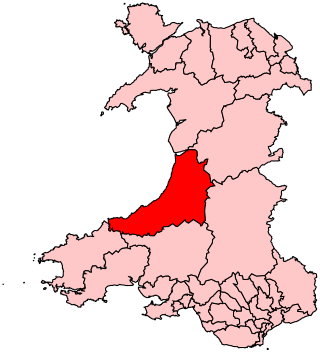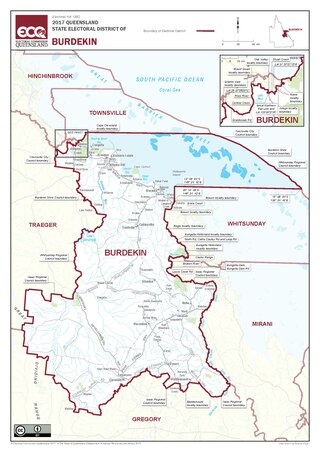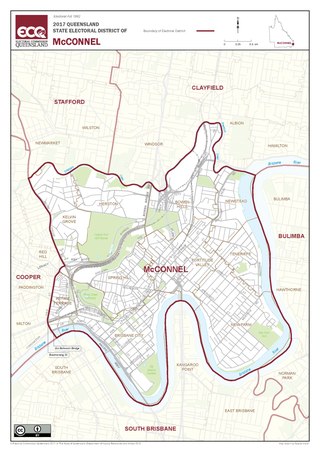Related Research Articles
John Campbell Bowen was a clergyman, insurance broker and long serving politician. He served as an alderman in the City of Edmonton and went on to serve as a member of the Legislative Assembly of Alberta from 1921 to 1926, sitting with the Liberal caucus in opposition. He also briefly led the provincial Liberal party in 1926.

Ceredigion was a parliamentary constituency represented in the House of Commons of the UK Parliament. Created in 1536, the franchise expanded in the late 19th century and on the enfranchisement of women. Its boundaries remained virtually unchanged until 1983. From 1536 until 1885 the area had two seats : a county constituency (Cardiganshire) comprising the rural areas, the other the borough constituency known as the Cardigan District of Boroughs comprising a few separate towns; in 1885 the latter was abolished, its towns and electors incorporated into the former, reduced to one MP. The towns which comprised the Boroughs varied slightly over this long period, but primarily consisted of Cardigan, Aberystwyth, Lampeter and Adpar, the latter now a suburb of Newcastle Emlyn across the Teifi, in Carmarthenshire.

Brisbane Central was an electoral division in the state of Queensland, Australia.

Elections were held in the Australian state of Queensland on 19 September 1992 to elect the 89 members of the state's Legislative Assembly.
Bowen was an electoral district of the Legislative Assembly in the Australian state of Queensland from 1873 to 1950 and at various times until 1992.
Pembrokeshire was a parliamentary constituency based on the county of Pembrokeshire in Wales. It returned one Member of Parliament (MP) to the House of Commons of the Parliament of the United Kingdom, elected by the first past the post system.

Elections were held in the Australian state of Queensland on 1 November 1986 to elect the 89 members of the state's Legislative Assembly. It followed a redistribution which increased the number of seats in the Assembly from 82 to 89.

Burdekin is an electoral district in the Legislative Assembly of Queensland in the state of Queensland, Australia. Centred on the Ayr–Home Hill region, the electorate also includes some of Townsville's southern semi-rural localities as well as the coal-mining towns of Collinsville, Moranbah and Clermont. The Burdekin River flows through part of the electorate.

Hamilton West is a New Zealand parliamentary electorate. It has been held by Tama Potaka MP of the National Party since the 2022 by-election.

Māngere is a New Zealand parliamentary electorate, returning one member of parliament to the Representatives of New Zealand. The current MP for Māngere is Lemauga Lydia Sosene of the Labour Party. She has held this electorate since 2023.

The Whitsunday Region is a local government area located in North Queensland, Australia. Established in 2008, it was preceded by two previous local government areas with a history extending back to the establishment of regional local government in Queensland in 1879.
Batticaloa Electoral District was an electoral district of Sri Lanka between August 1947 and February 1989. The district was named after the city of Batticaloa in Batticaloa District, Eastern Province. The district was a two-member constituency between March 1960 and February 1989. The 1978 Constitution of Sri Lanka introduced the proportional representation electoral system for electing members of Parliament. The existing 160 mainly single-member electoral districts were replaced with 22 multi-member electoral districts. Batticaloa electoral district was replaced by the Batticaloa multi-member electoral district at the 1989 general elections, the first under the PR system, though Batticaloa continues to be a polling division of the multi-member electoral district.
Pottuvil electoral district was an electoral district of Sri Lanka between August 1947 and February 1989. The district was named after the town of Pottuvil in Ampara District, Eastern Province. The district was a two-member constituency between July 1977 and February 1989. The 1978 Constitution of Sri Lanka introduced the proportional representation electoral system for electing members of Parliament. The existing 160 mainly single-member electoral districts were replaced with 22 multi-member electoral districts. Pottuvil electoral district was replaced by the Ampara (Amparai) multi-member electoral district at the 1989 general elections, the first under the PR system, though Pottuvil continues to be a polling division of the multi-member electoral district.
Ampara Electoral District was an electoral district of Sri Lanka between March 1960 and February 1989. The district was named after the town of Ampara in Ampara District, Eastern Province. The 1978 Constitution of Sri Lanka introduced the proportional representation electoral system for electing members of Parliament. The existing 160 mainly single-member electoral districts were replaced with 22 multi-member electoral districts. Ampara electoral district was replaced by the Ampara (Amparai) multi-member electoral district at the 1989 general elections, the first under the PR system, though Ampara continues to be a polling division of the multi-member electoral district.

The 11th New Zealand Parliament was a term of the Parliament of New Zealand.
On 15 December 2011, a by-election was held for the UK House of Commons constituency of Feltham and Heston in the London Borough of Hounslow. The by-election was caused by the death of its Member of Parliament Alan Keen. The Labour Party candidate, Seema Malhotra, held the seat.

Since being admitted to the Union in 1850, California has participated in 43 presidential elections. A bellwether from 1888 to 1996, voting for the losing candidates only three times in that span, California has become a reliable state for Democratic presidential candidates since 1992.

This is the results breakdown of the European Parliament election held in Spain on 15 June 1989. The following tables show detailed results in each of the country's 17 autonomous communities and in the autonomous cities of Ceuta and Melilla.

McConnel is an electoral district of the Legislative Assembly in the Australian state of Queensland. It was created in the 2017 redistribution as essentially a reconfigured version of Brisbane Central.
This is a list of electoral district results for the 1989 Queensland state election.
References
- ↑ "Bowen - 1989 - Election Archive". ABC News . Australian Broadcasting Corporation. Archived from the original on 21 September 2012. Retrieved 10 April 2020.